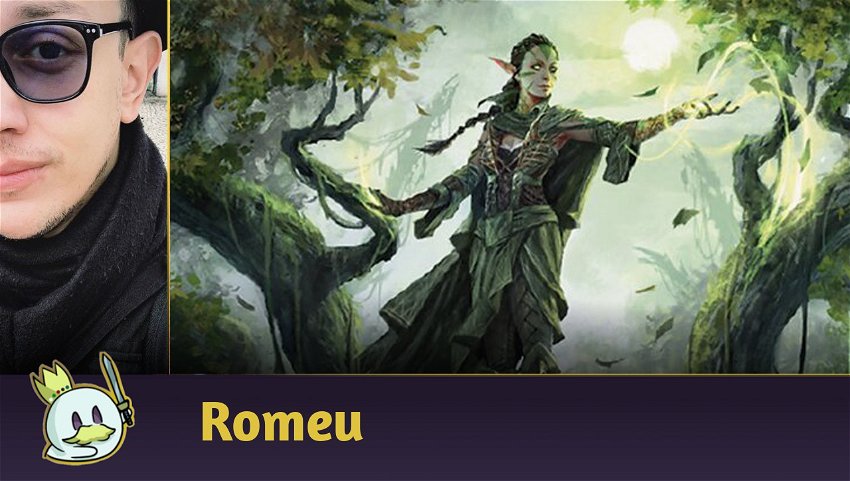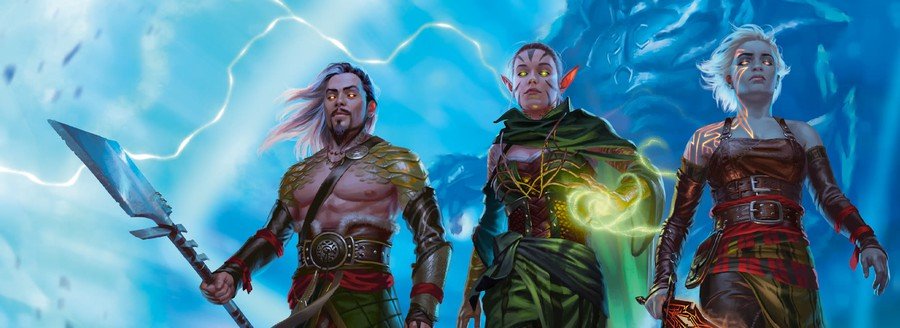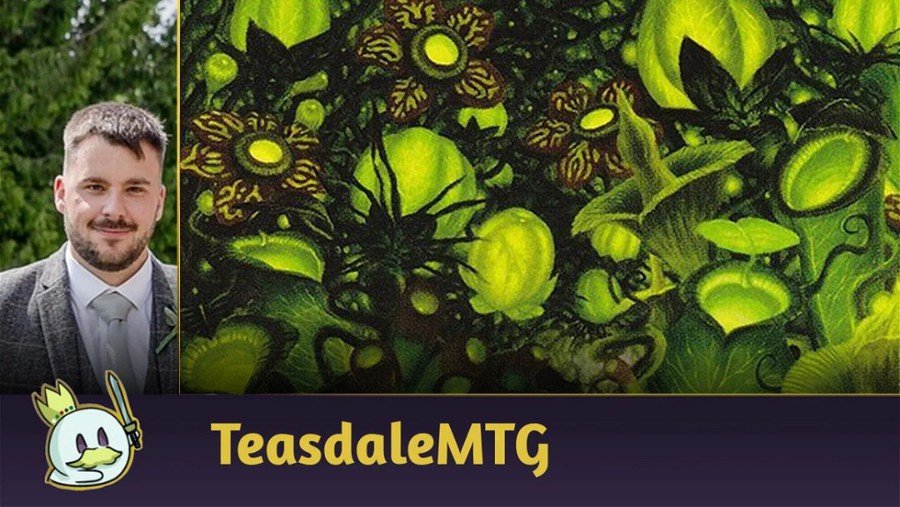A few weeks after the release of March of the Machine, Magic: The Gathering will have its first "mini set" in over a decade, with March of the Machine: The Aftermath
.
The set has only fifty cards, and presents the consequences that the events of the war against Phyrexia had on the Multiverse, including Planeswalkers losing their sparks.
Although a fifty-card expansion sets the precedent for future product releases of the same category, The Aftermath has some interesting pieces for competitive formats. Today, we'll look at their potential for Modern!
It's worth keeping in mind, though, that this set doesn't really seem impressive for the format, and most of its cards feel like they fall into the fringe playable category for Modern.
White

It's no exaggeration to say that The Aftermath's most important card for Modern might be an uncommon. For context, we need to talk about three cards: Punishing Fire, Umezawa's Jitte, and Fury.
Punishing Fire and Umezawa's Jitte are banned in Modern, both of which have too punishing effects for synergy-driven Aggro decks to deal with, and too few deckbuilding concessions to integrate into multiple lists.
What makes these spells so strong against Aggro is that they punish opponents who overextend the board with a single recurring removal effect. There's little point in putting multiple creatures into play when the opponent can kill two of them with Jitte's combat damage, or cast Punishing Fire repeatedly thanks to its interaction with Grove of the Burnwillows.
Years later, we have Fury. It might not be comparable to Umezawa's Jitte, but like the cards above, this creature limits the space that synergistic Aggro archetypes have because it punishes "go wide" plays, especially alongside effects like Feign Death. In the end, the result of Fury's presence is the same as if another card of its same category were legal in Modern: reducing the Metagame share of full "go wide" Aggro archetypes, such as Humans, which in the past was one of the main decks in the format.
Coppercoat Vanguard is an ideal example of an answer against Fury, as it makes its effect more punishing by forcing them to pay costs, and avoids an "Time Walk", where in exchange for a card from their own hand, a player can destabilize the opponent's board position and still cast a bomb with their mana in the same turn.
On Humans, protection against Fury and similar effects is amplified with Meddling Mage and Unsettled Mariner, and the synergy of Coppercoat Vanguard with the rest of the tribe, which still receives one more "lord" with this new creature, can give the archetype the opportunity to return to the competitive scene.

I don't think Modern is at a point where we need such specific hate against Burn, and Metropolis Reformer seems less effective than Leyline of Sanctity against other archetypes.
However, the fact that it is a creature makes this card worthy of an honorable mention.
Blue

Filter Out is an interesting option for blue lists who want a cheap answer against specific permanents without compromising their board, such as Merfolks.
This instant lets you return cards like Leyline Binding and Colossus Hammer to their owners' hands, as well as deal with Treasure tokens before Indomitable Creativity destroys them to fetch Archon of Cruelty, and also deals with multiple lock pieces on the board.
It doesn't seem like an instant Modern staple to me, but it's a good card to have in your collection.

Vesuvan Drifter creates interactions comparable to Goryo's Vengeance with Emrakul, the Aeons' Torn and Griselbrand. If one of these creatures is revealed from the top of your deck, Vesuvan Drifter becomes a copy of it and gains all of its abilities. Since this effect occurs at the start of the combat phase, if transformed into Emrakul, Vesuvan Drifter has Annihilator 6 in addition to being a 15/15 creature. If it transforms into Griselbrand, you can attack with it and activate the demon's ability to draw seven or more cards.
The question is whether we have enough elements to create this setup and complement it with Goryo's Vengeance's own combo, which today has an attrition route with The Underworld Cookbook. To prepare the top, we have Brainstone, Serum Visions and Otherworldly Gaze, as well as Mishra's Bauble to ensure that Vesuvan Drifter will turn into a major threat.
However, unlike reanimator combos, Vesuvan Drifter needs a full turn cycle to work, and in a Metagame as hostile to creature setups as Modern, it doesn't seem like a competitively relevant option for the format.
Black

Honorable mention. Blot Out exiles the creature or Planeswalker, which makes a lot of difference when dealing with Archon of Cruelty and/or other problematic high-cost creatures.
Red

Honorable mention. A Gamble for artifacts for two mana is a new effect for Modern, and while far less efficient than Stoneforge Mystic and Urza's Saga, there may be possibilities for this spell on specific archetypes.
Green

Nissa, Resurgent Animist might deserve a slot in Elementals, as she turns every Fetch Land you play into a card advantage similar to Risen Reef, which she interacts with quite well.
A 3/3 for three mana isn't very impressive, and unlike Risen Reef, we can't have multiple copies of it in play to stack its triggers. On the other hand, Nissa offers more value, helps speed up mana for casting heavier cards like Elesh Norn, Mother of Machines, and even interacts well with Wrenn and Six.
In general, the new Nissa looks good enough for the Goodstuff decks who care about specific elementals, especially if you find one of the Evokers, like Solitude or Fury, and it doesn't look like it's a card you want four copies of, which mitigates bad topdecks when we already have a copy of it in play.
Multicolored

Jirina, Dauntless General is yet another Human who does a lot for its costs. It protects your creatures from sweepers like Supreme Verdict and the aforementioned Fury, as well as serving as a maindeck hate that slows down Izzet Murktide, not to mention the possible interactions it has with Aether Vial against decks that resort to the graveyard.

Normally, I would be skeptical about a four-mana card with no immediate impact in Modern. But Narset, Enlightened Exile has a triggered ability that doesn't just target Instants and Sorceries, but any non-creature spell, which includes Planeswalkers.
In Jeskai's colors, Narset is also a pitch for Solitude, Subtlety, and Fury, and can be a hugely powerful value engine when copying cards like Expressive Iteration, Wrenn and Six, or even Teferi, Time Raveler.
However, the new Narset doesn't have the same built-in value as other threats on the Goodstuff lists, and could lose its space to more efficient cards.

As with Pioneer, Niv-Mizzet, Supreme is an interesting addition as a one-of that can be picked up with Bring to Light, and still allows you to reuse it the next turn, as well as allowing to cast other powerful Instants and Sorceries, such as Expressive Iteration and Eladamri's Call.
In addition, the new Niv has hexproof from monocolored. That is, it dodges Solitude, Prismatic Ending, Leyline Binding, Unholy Heat, and a 5/5 with Flying is a decent threat in a stabilized game.
Conclusion
That's all for today.
The Aftermath didn't bring any cards that feel like an instant Modern staple, with just a few punctual additions worth experimenting with in certain archetypes, with the ability to make small changes in the Metagame.
If you think a card deserves more attention than it received in this review, feel free to leave it in the comments!
Thanks for reading!













— Comments 0
, Reactions 1
Be the first to comment